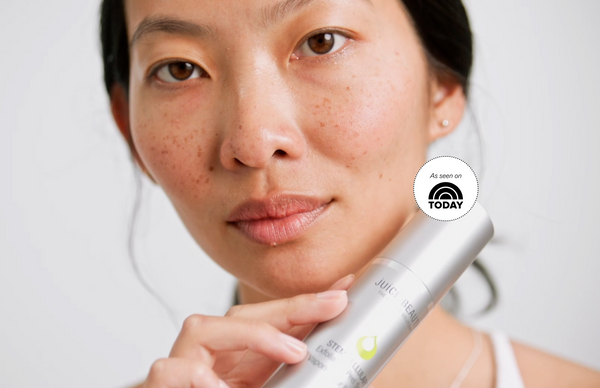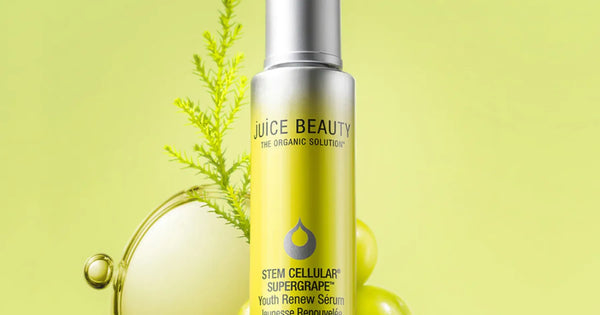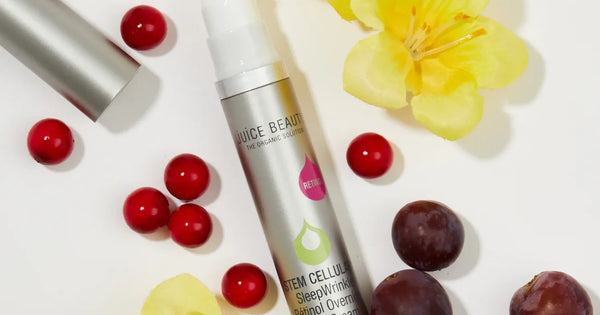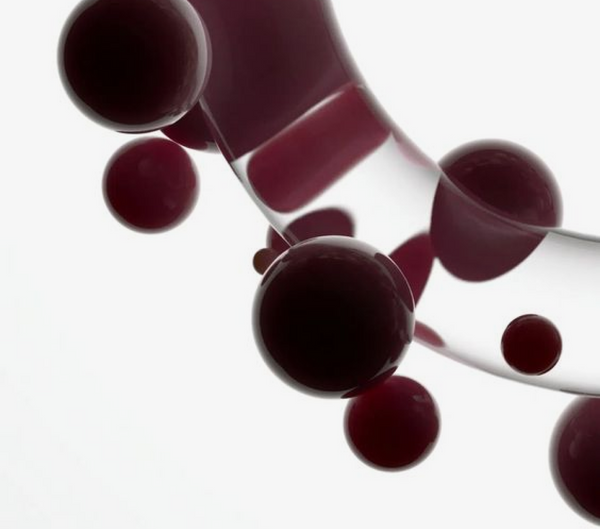Not all products play well together. When building your skincare routine, it’s important to consider how different ingredients will interact with each other.
Hyaluronic acid and retinol are some of the most powerful active ingredients out there. They’re able to transform the look of your skin — but their strength can make them rough on your skin if used incorrectly.
In this article, we’ll break down how these powerful actives impact your skin and explain how to use each — together or separately — in your skincare routine to achieve powerful results that will brighten your skin from the inside out.
Why Are Active Ingredients So Important?
All skincare products are made up of two types of ingredients: active ingredients, and inactive ones.
Active ingredients are responsible for the benefits of the skincare product. They’re clinically tested and FDA-approved to treat specific skin concerns. For example, niacinamide is proven to reduce the look of pigmentation issues by interacting with pigment-causing molecules called melanosomes.
However, niacinamide serums need more than just this chemical to work. That’s where inactive ingredients come in.
Inactive skincare ingredients, also called excipients, are the base formula of a skincare product. Think of them as the glue that combines all of the active ingredients — but these ingredients aren’t junk. They provide essential chemical properties a skincare product needs to function. Examples of excipients include thickeners, emulsifiers, and emollients.
A good skincare product needs both types of ingredients — active and inactive — to work. It’s all about combining the right actives with the right excipient. At Juice Beauty, all of our formulas are crafted using our Bio70+ technology, meaning each product has a base of at least 70% organic ingredients to help our potent actives do their job.
What Can Hyaluronic Do for Skin?
Hyaluronic acid is a clear, gel-like substance that supports your skin’s natural barrier. Your body naturally produces this acid, but scientists can synthesize it in laboratory settings, too. Those chemists call hyaluronic acid a humectant, but we call it a hydrator.
Humectants — hyaluronic acid included — draw in moisture like a sponge. Hyaluronic acid can hold over 1,000 times its weight in water, making it a great resource for your skin.
Hyaluronic acid increases the amount of water in your skin, which has two key benefits:
- A natural moisturizer: Especially if you have dry skin, you want to keep as much moisture in your skin as possible. Hyaluronic acid’s ability to retain water works to nourish your skin from the inside out, banishing dryness and delivering unmatched hydration.
- Supportive properties: Because hyaluronic acid plumps your skin with water, it is a great agent to help reduce visible signs of aging. By smoothing out your skin, this active can lift the look of fine lines and minimize the appearance of wrinkles.
What Can Retinol Do for Skin?
Pure retinol is most often described as a yellowish oil, but it can take on a wide variety of colors and consistencies when used as a skincare ingredient.
As a vitamin A derivative, retinol (and the entire retinoid family) has an ability few other actives can do: it can reduce signs of aging.
There are two chemical processes responsible for the anti-aging properties of retinol:
Cell Turnover
The surface of your skin is covered with dead skin cells that often show signs of sun damage, acne scaring, or hyperpigmentation. To remove these impurities, retinol encourages your skin to create new skin cells to take their place. This process is called cell turnover, and it’s responsible for maintaining a smooth and unmarred complexion.
Collagen Production
Retinol also supports your skin’s natural ability to produce collagen, an important protein that holds up the middle layers of your skin. As you age, your body starts to make less of this structural protein, which can weaken the skin and lead to wrinkles.
By ramping up collagen production, retinol works to firm and tighten skin, lifting these wrinkles in the process.
Can You Layer Hyaluronic Acid and Retinol?
On their own, hyaluronic acid and retinol are powerful active ingredients — but what happens if you put them together?
Turns out, retinol and hyaluronic acid are the perfect couple: they balance each other out.
Every skincare ingredient comes with its own strengths and weaknesses, and hyaluronic acid and retinol are no exception. Retinol especially is known for its tendency to be rough on skin: while generating new cells can support smooth and healthy skin, too much turnover can leave you feeling a little raw.
However, if you layer this skincare product with hyaluronic acid, the humectant will drench your skin in water, easing the sting of a strong retinol serum.
How To Use Hyaluronic Acid With Retinol
Are you ready to combine the benefits of hyaluronic acid and retinol? Though layering your skincare can seem intimidating, it’s a simple process.
Start With a Clean Face
Before you apply any kind of skin serum or cream, you should first cleanse your skin.
Throughout the day, your skin produces oils and sweat that can skin into your pores and form a thin film on the surface of your face. In order to treat the skin beneath with either active ingredients, you need to first wash away this barrier.
Facial cleansers are designed to lift all of the dirt, oil, dead skin cells, and leftover makeup clinging to your skin.
For Dry Skin, Start With Hyaluronic Acid
If you have dry or sensitive skin, you should first apply your hyaluronic acid serum.
You already know that hyaluronic acid works to hydrate the skin. It does this specifically by regenerating the lipids (or fats) in your skin’s natural barrier. These lipids are thicker than regular water, which helps trap moisture beneath the surface of your skin. When you apply hyaluronic acid, these lipids get to work immediately, forming an effective shield on top of your skin.
This shield can protect your skin when you layer retinol on top of it. Without a lipid barrier, retinol can peel away layers of skin cells, causing severe irritation for both dry and sensitive skin types. However, hyaluronic acid provides a protective layer between your skin and the retinol serum, allowing the retinol to promote cell turnover and boost collagen production without stripping away healthy skin cells.
The best hyaluronic acid serums strengthen their powerful active with equally powerful inactive skincare ingredients (or excipients) to take this hydration to the next level. Our Stem Cellular SuperGrape Youth Renew Serum with Hyaluronic Acid is one of these products.
This hyaluronic acid serum is held together by arginine and jojoba esters, prickly pear juice, and rare Sagrantino supergrape juice grown at our own innovation farm. Each of these antioxidants supports your skin’s natural barrier, supplementing the work of the key active, hyaluronic acid. In clinical trials, 100% of users reported a more youthful skin look when using our hyaluronic acid serum.
For Retinol Pros, Start With Retinol
For people who are new to retinol, introducing the potent skincare ingredient can be a big adjustment for the skin. That’s why first-time users need to be cautious with how much and how often they use the product. However, people whose skin is already accustomed to this powerful active have less to worry about.
If you use retinol on a regular basis, you don’t need to dampen the effects of this skin treatment. You don’t need a protective barrier underneath your retinol serum.
Retinol pros should layer retinol under hyaluronic acid.
While retinol newbies need some protection from the sometimes harsh results of retinol, seasoned users are used to this ingredient’s intense effects. If retinol already has a place in your skincare routine, you have the most to gain from hydrating your skin after this treatment — which means hyaluronic acid after retinol.
Even if your skin doesn’t need it, the best retinol serums incorporate their own elements of hydration into their formulas, often through excipients. Our Stem Cellular Anti-Wrinkles Retinol Overnight Serum does just that.
In addition to a 2.5% BioRetinol + Retinol concentration, this retinol serum is made with botanicals rich in both vitamins and antioxidants to nourish your skin from within. No wonder 28% of clinical trial subjects saw a reduction in wrinkles in just a month and a half.
Take a Break Between Serums
Whether you start with hyaluronic acid or retinol, it’s important to give the skincare product enough time to take effect before adding the next one. The key to layering your skincare is to take a break between each step.
Most skincare products are made to be used on clean, dry skin — not skin that’s still tacky with another serum. Though it may seem like a waste of time, waiting even a a few extra minutes between steps in your skincare routine can increase the effectiveness of your products, helping you get the most out of your products.
Finish With Moisturizer
After you’ve applied your hyaluronic acid and retinol serums, lock in the skin benefits with your favorite moisturizer.
Every good skincare routine should end with a dose of hydration. Although serums made with humectants like hyaluronic acid, niacinamide, and glycerin are powerful hydrators, your skin needs something more substantial to seal it all in.
Thicker lotions and creams deliver one final dose of moisture at the end of your skincare routine, leaving you with long-lasting hydration that will continue nourishing your skin long after you leave the bathroom.
Unlock Your Natural Beauty With Nature’s Actives
The world is filled with powerful plants that can make a difference for your skin. If you’re anything like us, you want to squeeze as much of the Earth’s beauty into your skincare routine as possible. That’s why you should pair hyaluronic acid with retinol.
When you use both a hyaluronic acid serum and a retinol treatment in your skincare routine, you ditch the filler ingredients and fuel your skin with only the most powerful actives. We believe that your skin deserves the best, and when you feed it with antioxidant-rich skincare products like these, you give your skin the best nature has to offer.
Sources:
Excipient - an overview | ScienceDirect
Hyaluronic Acid: What It Is, Benefits, How To Use & Side Effects | Cleveland Clinic
The hype on hyaluronic acid | Harvard Health
Retinol: Cream, Serum, What It Is, Benefits, How To Use | Cleveland Clinic
Retinoid or retinol? | American Academy of Dermatology Association






